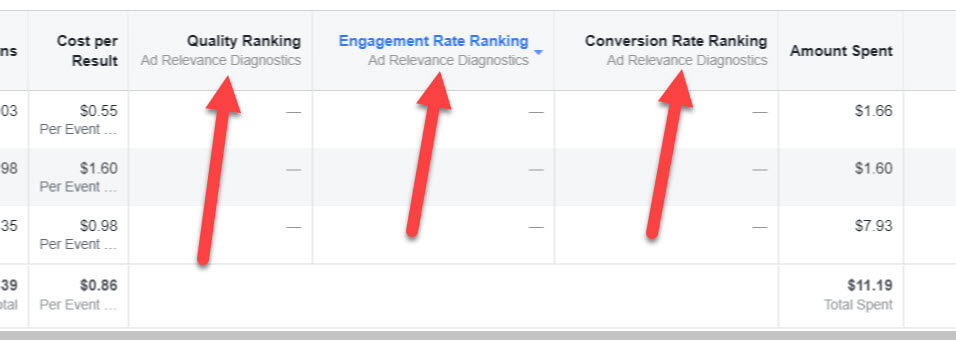Facebook Ads Relevance Diagnostics Replace ‘Relevance’ Score
Yesterday, Facebook announced it will be closing down the relevance score metric beginning on April 30th and Facebook Ads relevance diagnostics will now be the new norm. We’ve all relied on and this could be the best news we’ve heard all year. Facebook is an ever-changing ad platform, something we’ve seen using the campaign budget optimization requirement starting this year as well.
So what’s changing and what is Facebook Ads relevance diagnostics? Before we get into what will be changing, what really is the relevance score? Facebook advertising is heavily based on user engagement. This means an ad’s performance is directly based on what we all know as the ‘relevance score’. But a relevance score isn’t just a simple number. There are many, many factors that go into the calculation. So many factors in fact, that we’ve tried to create our own calculations to make sense of it.
Even after asking Facebook directly the answer still led into algorithmic calculations based on so many factors it would be impossible to calculate on our own. We did so much digging over the years that we discovered that to get the coveted 10 relevance score, you would need to get 124+ conversions from every 1,000 clicks. For a 9 relevance score, these metrics significantly dwindle and so forth as the score drops. In addition to the conversion metrics, here’s what else we do know that’s calculated into relevance scores:
- Expected Engagement. This metric would be impossible for anyone but an algorithm to figure out.
- Current Market Opportunity. Based on your audience and pool of potential converters. This plays into Facebook’s “pools” of opportunities the ad community chases after every day, namely the ‘Purchasers’.
- Conversion Rate For Your Goal. As mentioned above, if you’re conversion rate is above 10%, you’ll likely see a 9 or 10 relevance score. The more your objective is reached, the better your ads do.
- Positive engagement. But more specifically Comments over four words. Shares clock in at #2 after comments. Reactions are less likely to influence a score, but do help.
- Negative engagement. When ads get flagged, marked inappropriate, angry reactions and negative responses to random polls sent to users who have engaged through an ad and followed up with through a survey.
- Video watch length. This has been confirmed as a factor, but a small factor as part of the whole.
- Messaging. The more your ad copy and visuals resonate with your audience, the more you’ll see an impact in your scores. These factors also heavilly contribute to your ad performance as a whole; if you find something that works, chances it will get a better score.
With that said, this is as simple as looking at your click-through rates (CTRs), your CPMs or your CPCs. But a metric that’s been heavily relied on in Facebook Ads Manager is the relevance score. Relevance scores as you know range from 1-10 and will make or break your campaign.
Why Is Facebook Changing Ad Relevance Scores?
Every advertiser’s wish is to get more data to make a better decision and this change will help get more granular feedback about advertising. The relevance score, while a comfort spot for many, is a crutch and may be extremely frustrating to base decision making without. However, this change is something that has been in sort need of addressing given heavier competition in the ad space and growing concerns that there’s no control over what Facebook decides is a good or bad ad.
What Specifically Are Facebook Ads Relevance Diagnostics?
The new Facebook Ads relevance diagnostics will break down the scores into three granular metrics. According to Facebook’s announcement yesterday:
- Quality ranking: How your ad’s perceived quality compared with ads competing for the same audience.
- Engagement rate ranking: How your ad’s expected engagement rate compared with ads competing for the same audience.
- Conversion rate ranking: How your ad’s expected conversion rate compared with ads that had the same optimization goal and competed for the same audience.
Does this seem a bit familiar? Sure it does. Anyone who’s seen their ‘Delivery Insights’ will have seen these metrics for the past few years. Some insights would call out how much of an overlap the audiences have, the delivery rate and more. The change to relevance scores is a bit more than that, however. This is further explained on their Help page as the product is rolled out leading up to April 30th.
Here’s what the new Facebook Ads relevance diagnostics will look like breaking down the quality ranking, engagement ranking and conversion ranking scores by percentage:
Let us know if you think this is a positive or negative change for Facebook in the comments below!









